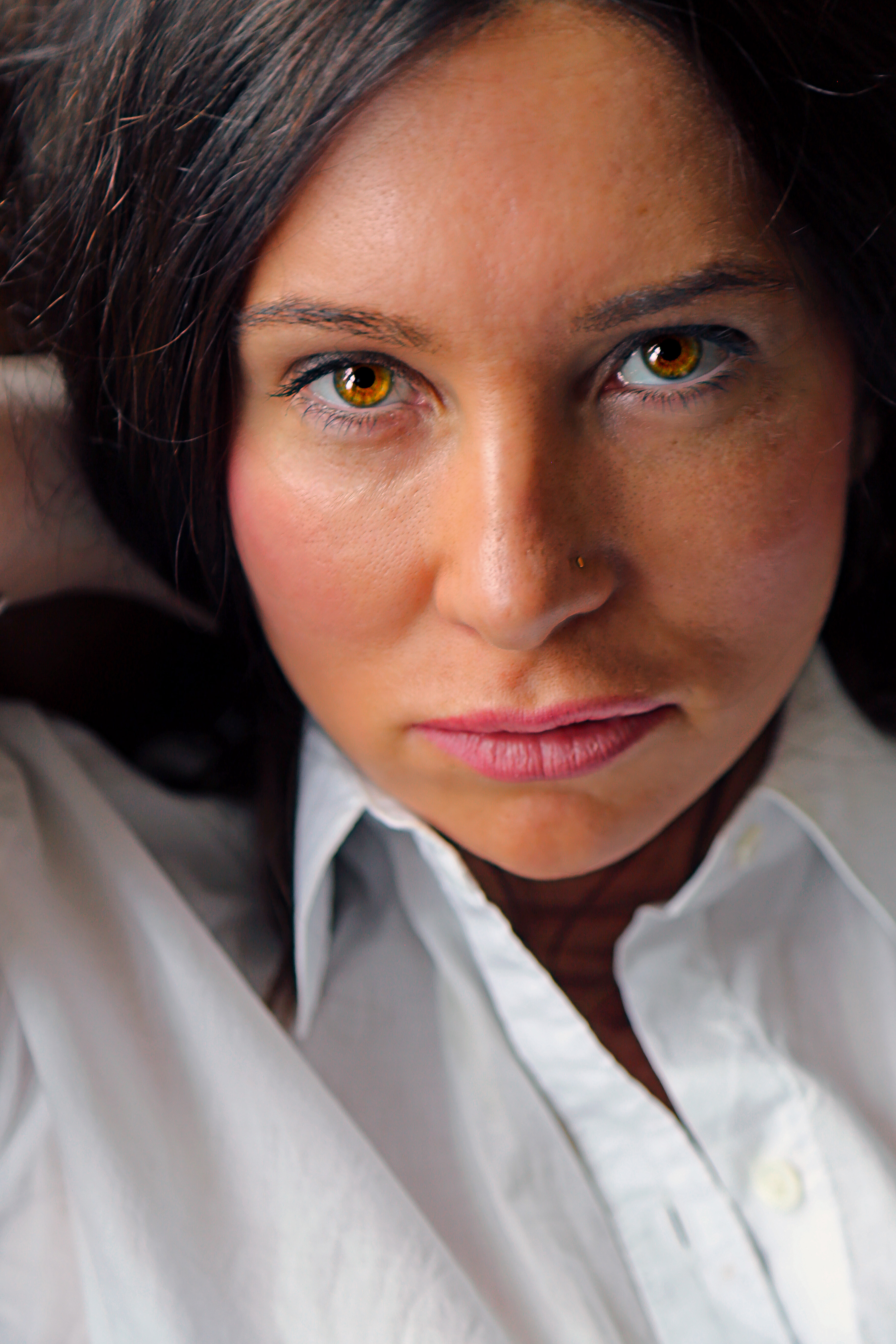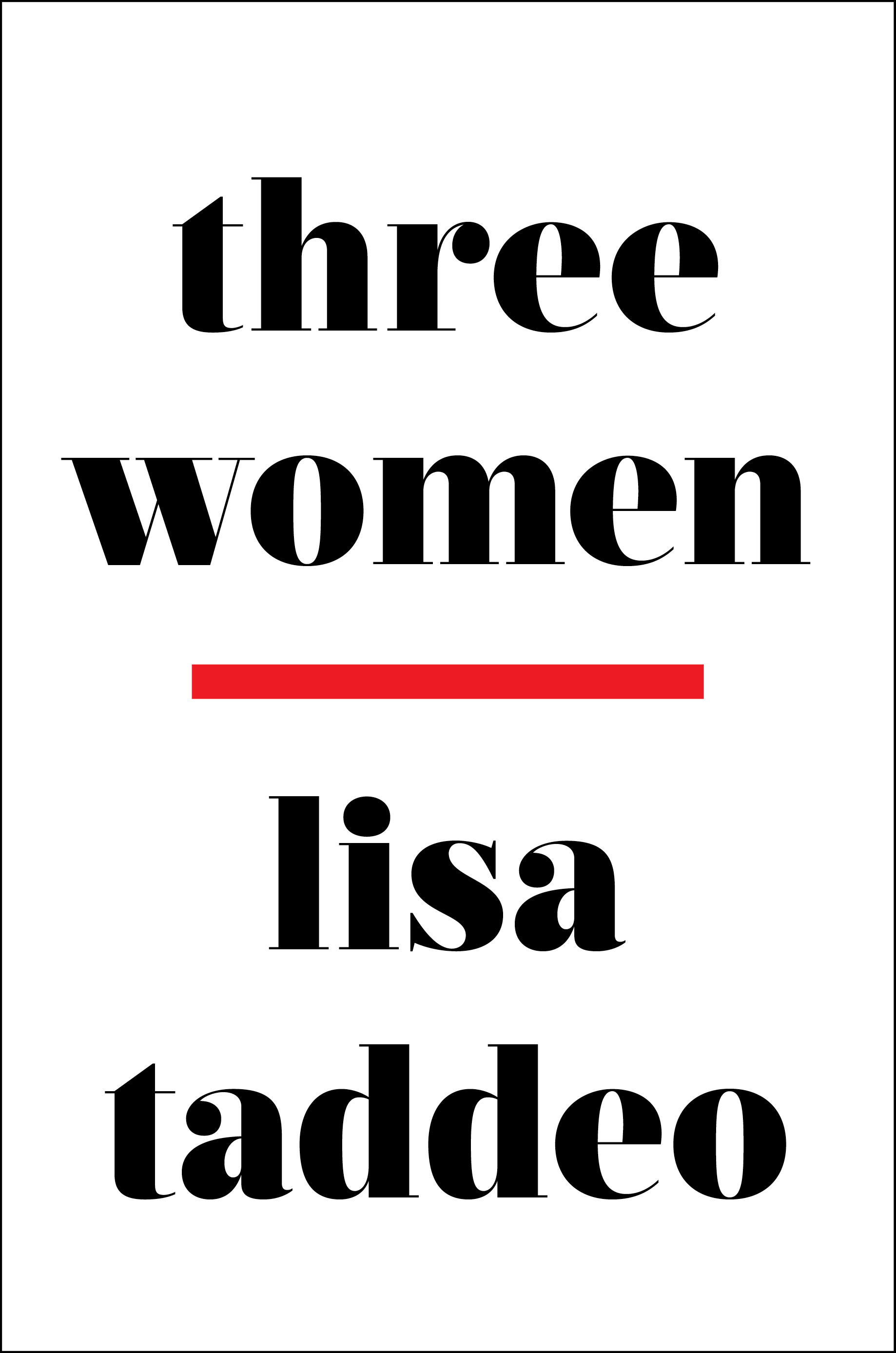It took Lisa Taddeo six cross-country road trips to figure out how to crack her first book, Three Women. The New York-based journalist started research for the project a decade ago, envisioning the book as a survey of sexual desire in America, and began crisscrossing the country in her car, posting fliers in community hubs asking people to share intimate stories.
After several such trips, however, she hit a dead end: Would-be subjects kept deciding they didn’t want to disclose such personal details. But then the author moved to Indiana to be closer to the sex-research mecca the Kinsey Institute, and found a subject who was willing to talk. Her name was Lina, her husband hadn’t touched her in months, and she was craving physical contact.
“After I found Lina, I realized I wanted to do these deep dives,” Taddeo says.
As a result, rather than a national survey, Three Women features a trio of deeply reported narratives, which focus on the sex lives and desires of Taddeo’s subjects. These include twentysomething Maggie, a North Dakota waitress who takes her high school English teacher to court for initiating a sexual relationship when she was underage; Lina, a married homemaker in Indiana who becomes increasingly obsessed with a married man she’s sleeping with; and Rhode Island restaurant co-owner Sloane, whose husband likes to watch her have sex with other men. Bookending these long narratives (Taddeo spent eight years reporting the book), in the prologue and epilogue, is a portrait of the author’s mother, whose approach to sex baffled her daughter: “My mother never spoke about what she wanted. About what turned her on or off,” Taddeo writes.
Since its release on July 9th, Three Women has drawn both rave reviews and some criticism for Taddeo’s assertion in the book that she chose her subjects in part for their “relatability.” To her, the three stories “came to stand for the whole of what longing in America looks like,” she writes in the prologue, though all of the women she writes about are white, two of them are straight, and two of them are Catholic. “[Taddeo’s] belief that the stories of three white women—two of whom are Catholic—might ‘stand for’ American desire suggests a circumscribed view of both women and America, one that involves the strange stress on ‘relatability,'” Lauren Oyler wrote in a review for The New Yorker.
When Pacific Standard spoke with Taddeo about her book in the wake of its commercial success, and some more skeptical reviews, she clarified her position on her book’s “relatability,” why some readers have interpreted Three Women as depressing, and how her three subjects have reacted to the published story.

You write in the introduction that your three subjects are “in charge of the narratives” in the book. How did you seek to facilitate that, and was that process different at all from your usual reporting techniques?
I wanted [the book] to be without my opinion. I wanted it to be just the stuff they told me, not the things that I necessarily extrapolated. I try to keep the voice of the book [consistent]: I wanted to make each section feel different and sound like each woman and the places they came from, but at the same time I wanted there to be a unifying voice. I had to translate a lot of it, but I hope I did it as a translator being faithful to [their] language.

(Photo: J. Waite)
All three of the women in the story face some sexist backlash for their sex lives. Did you walk into your reporting looking for women who’d faced criticism in their communities, or did that arise organically as you followed these women’s stories?
That organically arose. About 80 percent of the people I spoke to [had experienced backlash]. So the notion that [these three] are different [is false]: These women had [retribution] done to them, but to the extent that almost everybody has. I spent so much time with them that that stuff came out, and they allowed me to use it, [which] was huge, brave, and wild. I didn’t realize that the judgment of their communities was so virulent. Maggie was not believed at all in her town, in her state. Sloane was talked about and gossiped about by people who were close with her. Lina, when she first walked into that conference room [where Taddeo had started a women’s discussion group] and told people that her husband didn’t kiss her on the mouth, everyone was like “Oh, man that’s so awful”; and then the next time when she walked in and told everyone she was about to meet this guy [for an affair], everybody blanched and basically said, “That’s disgusting.” That, to me, is insane. I did not expect that it was going to turn out that way, but it did.
The book has faced some criticism about how all three subjects are white, yet you said you chose them for their “relatability.” Could you respond to those criticisms by elaborating on the thinking behind your selections?
I didn’t really select [these three] as much as they selected doing it, as far as they were the only ones who gave me that much [information about their lives]. The first 50 people of the draft I handed in were of many different orientations and races. So I wasn’t looking for white women—I was very much looking for a range, and I had a range, but these were the people who spoke to me [at length].
In terms of relatability, I do think they are relatable. I don’t think that you have to be a different race or orientation to relate to the very core aspect of desire that has been written about and talked about since the very beginning of time and spans race and orientation. Obviously, different sexual orientations and races will have very different experiences, but to separate desire by race and orientation is not really what I was trying to do, when these three stories were 80,000 words each instead of the 4,000 words of what [other sources] would have let me have. As I was writing it, people didn’t know what it would look like, and neither did I.
Where were you in your writing process when the #MeToo movement began, and did it affect your writing at all?
It was mostly written and reported largely—almost 97 percent—before #MeToo. The #MeToo movement is vital, great, necessary, and amazing, but this book was never meant to be about what women didn’t want. [Still,] I think that there is what we don’t want in there: Some [subjects] didn’t want to be raped, but it shaped their future desire.

(Photo: Simon & Schuster)
Second, which I think it super important, is that [#MeToo] is not in most of the small towns that I’ve since visited and gone back to. One of my family members who lives in New Jersey, who is 19 years old, a smart, young girl who’s not necessarily in a certain culture where they’re talking about that, did not know who Harvey Weinstein was three months ago. Maggie’s [the woman from North Dakota] case might have gone differently post-#MeToo, but I also don’t know if it would have. I talked to people around it off the record, and they basically said they didn’t think [her teacher] was guilty of what he was accused of doing, but even [if he was], they would not have convicted him.
You write in your introduction that these women’s stories came to represent for you what “the whole of what longing in America looks like.” Now that you’re finished with the book, what do you think this book says about desire in America?
The main thing is that I don’t think that it speaks about desire as a whole, I think it speaks of [these women’s] own desires, very powerfully. What I found is that the judgment of the community [was prevalent]. I think it’s happening because of where we are in the world; I think it’s happening because we don’t want to hear about women’s desires so much. As women, [judgment] makes us feel like we’re looking in a mirror, it makes us angry that we’re not moving ahead as a gender, or it makes us angry that other people are doing things that we wish we did or were scared to do. The truth is, I think what’s really not moving the gender forward is people judging other people for their desires and what they do.
Lina would pick up and drive to wherever Aidan [her lover] was at the drop of a hat; just because other people wouldn’t do that doesn’t mean that the core feeling in there, of wanting to be touched after being raped and then not being touched by one’s husband for months, of someone wanting to be seen, [isn’t true]. What desire looks like is the need and want to do something, even though you probably know you’re going to be judged.
The bulk of the book is reported in the third person, without your involvement, and yet you and your mother figure in the introduction and epilogue. Why did you want to include your experiences there?
I felt that these women had given so much of their stories; not talking a bit about myself felt like I was just putting them on the block and not myself. I wanted to say that I had the same things going on, and mommy issues, which I think all of the women I talked to [had]. I wanted to frame [the stories] a bit and I didn’t want to attribute to [my sources] the notion of the mother stuff, even though the women talked about it at length, and I wanted to say how I felt about it.
Have your subjects read this book, and if so, what do they think?
Yes. Maggie said it gave her closure. At first it was very difficult for her, but then we made changes: I’ve taken stuff out, we put stuff back in, it was collaborative to the extent that I want these women to feel validated and not feel bad about anything. Lina wants less to do with it because, for her, it was more about talking to me and less about wanting to see it reflected. She wants other people to feel seen by her story; I don’t know how much she wants to relive it. Sloane said that I made her sound cooler than she is, which is patently not true, because she is cool. It’s been really good in that sense, and I hope it continues that way because that’s one of the things I care about the very most in this process, how they feel.
This interview has been edited for length and clarity.

Pacific Standard’s Ideas section is your destination for idea-driven features, voracious culture coverage, sharp opinion, and enlightening conversation. Help us shape our ongoing coverage by responding to a short reader survey.





